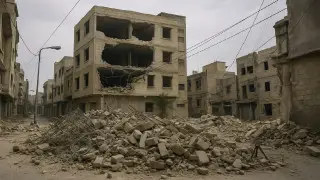
China, Arms, Pakistan
International News: In the aftermath of the Pahalgam terror attack, South Asia witnessed a limited but deadly military conflict between India and Pakistan. But what shook the region more than the cross-border violence was China’s blatant involvement. Beijing, India’s long-time strategic rival, openly armed Pakistan with lethal military hardware—from J-10C fighter jets and PL-15 missiles to nuclear-capable SH-15 howitzers and killer drones. The battlefield turned into a grim testing ground for China’s weapons. And the implications, experts say, are terrifying.
Defense strategist Saurav Jha warns that in the next 12 to 18 months, India could face a joint air assault from both China and Pakistan. According to him, China’s motivation is twofold—first, to trial its military arsenal before an eventual Taiwan invasion. Second, to destabilize India and secure its western front from retaliation. “China is systematically upgrading Pakistan’s military to weaken India from within,” Jha said.
China has already handed over Hangor-class AIP submarines to Pakistan’s Navy and is reportedly preparing to sell the fifth-generation J-35 stealth fighters as well. More dangerously, experts believe Beijing could transfer hypersonic missile technology to Islamabad—missiles that can breach any known air defense system.These developments come amid increasing Chinese aggression on India’s eastern front. Just weeks ago, Beijing renamed dozens of locations in Arunachal Pradesh, claiming sovereign rights. India rejected these provocations. But the message from China was loud and clear—it’s preparing on all fronts.
Back in 2022, renowned US strategic expert Ashley Tellis from the Carnegie Endowment issued a chilling warning. He urged India to re-test its thermonuclear bomb to restore the strategic balance with China. “There is a massive difference between atomic bombs and thermonuclear weapons,” Tellis said. “Nuclear bombs yield only a few kilotons. But thermonuclear devices can unleash destruction equivalent to hundreds of kilotons.” Tellis noted that the bombs dropped on Hiroshima and Nagasaki were of 15–20 kilotons. “Those were small towns. In contrast, cities like Beijing, New Delhi, and Mumbai are vast and heavily populated. One atomic bomb won’t suffice. You need true deterrence,” he explained.
He also hinted that India’s 1998 thermonuclear test may have been a failure. “If India’s relations with Pakistan and China remain tense, the absence of a proven thermonuclear capability is dangerous. Pakistan doesn’t have many cities that require such a weapon. But China does. For true deterrence, India must be able to threaten those megacities,” Tellis emphasized.
During the limited conflict, Pakistani leaders repeatedly issued veiled nuclear threats. Islamabad claims to possess tactical nuclear weapons that can wipe out localized targets. India, however, adheres to its ‘No First Use’ policy—but has stated clearly that any nuclear attack will be met with overwhelming retaliation. Currently, India holds around 180 nuclear warheads. Pakistan has about 170. But China is way ahead with 500 and aims to increase this number to 1,500 by 2035. Experts argue that without credible thermonuclear deterrence, India may find itself cornered.
Beyond nuclear parity, India’s next challenge lies in hypersonic missile technology. These are modern Brahmastras—impossible to intercept, blisteringly fast, and devastatingly precise. China has already tested them successfully. The U.S. is scrambling to catch up. India cannot afford to lag. While the BrahMos supersonic missile played a key role in neutralizing Pakistani assets during the war, analysts stress that hypersonic weapons are India’s true frontier. “China respects only power. Unless India develops a credible hypersonic arsenal, Beijing won’t hesitate to strike first,” said a senior DRDO official under condition of anonymity.
The war may have paused. But the battle for dominance in South Asia is just beginning. With China feeding Pakistan its deadliest technology and preparing its own fronts, India must move swiftly. Thermonuclear capability, hypersonic deterrence, and robust readiness are not options anymore. They are necessities. Because the next war might not come with a warning.













Copyright © 2025 Top Indian News
